Every year, without fail, I scribble down in a notebook with The Little Prince on the cover all the books I’ve read. It’s become a ritual of sorts—one part record-keeping, one part quiet joy. Some people track their steps, I track my stories.
Whenever a book leaves a mark on me, the kind that stays with you like the smell of rain on warm pavement, I add a little heart next to the title. If I think it’s something my daughter might love one day, I write the letter J beside it—J for her name, for joy, for the future reader I’m secretly raising under my wing.
Of course, I always have a list of books I want to read. I’ve long made peace with the fact that I will leave this world with an unfinished list of books. And honestly? That feels comforting. It means life will never run out of stories to offer.
Since half the year has somehow slipped through my fingers (wasn’t it January five minutes ago?), I thought I’d pause, exhale, and make a list of the books that stood out so far. The ones that made me underline things furiously. The ones that made me close the book and stare at the ceiling. The ones that reminded me why I read in the first place.
Here are my favorite reads from the first half of this year—no particular order, no pressure, just love.
Elif Shafak and the Forty Rules That Stirred My Soul
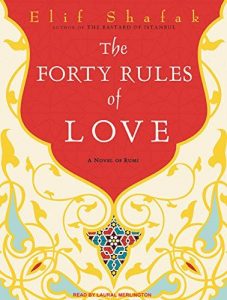 Elif Shafak is a Turkish-born author who now lives in France and happens to be the most widely read female novelist in Turkey. But she’s much more than a bestselling writer—she’s a public intellectual, a political voice, and a brilliant speaker whose TED Talks make you pause, breathe, and rethink your entire worldview over a cup of tea. Her novel The Forty Rules of Love is one of those books that quietly slips into your life… and then refuses to leave.
Elif Shafak is a Turkish-born author who now lives in France and happens to be the most widely read female novelist in Turkey. But she’s much more than a bestselling writer—she’s a public intellectual, a political voice, and a brilliant speaker whose TED Talks make you pause, breathe, and rethink your entire worldview over a cup of tea. Her novel The Forty Rules of Love is one of those books that quietly slips into your life… and then refuses to leave.
It tells two parallel stories: one grounded in the modern world, the other drifting through the mysticism of the 13th century. In the present-day narrative, we meet Ella Rubinstein—a 40-year-old woman who seems to have everything on paper (a home, a family, a marriage) and yet, somehow, nothing that truly ignites her. She’s a mother of three, living in a shell of a marriage, quietly suffocating in the routine of daily life. And then she starts reading a manuscript.
The manuscript tells the story of Rumi, the celebrated Persian poet, and his soul-shaking encounter with Shams of Tabriz, a wandering Sufi dervish—equal parts wise man and spiritual firestarter. Their connection transcends the rational, the acceptable, and even the understandable. It is love in its rawest, most spiritual form. The kind of love that burns down old identities just to awaken the soul.
The brilliance of the novel lies in how these two timelines mirror each other. While Ella reads about Rumi’s transformation, she slowly starts going through her own. Rule by rule, page by page, she peels off the layers of her well-behaved life, questioning everything she thought she knew about love, loyalty, faith, and freedom.
Shams, in his beautifully maddening way, drops forty “rules” of love throughout the story—spiritual insights disguised as poetic bombs. And while they’re technically written by a fictional character, you can feel them vibrating with timeless truth. They’re the kind of sentences that make you stop mid-read, stare out the window, and think, “Wait, was that meant for me?”
One of my favorites? “Don’t get me wrong. Love is not about attachment. Real love allows you to stand tall, not lose yourself.”
Yes, please.
So if you, like Ella (or like me), are somewhere around 40 and wondering whether this is it—this life, this love, this version of yourself—read this book. And let Shams whisper his inconvenient truths into your soul. You might not agree with every rule. You might even resist them. But I promise—something inside you will shift.
Hopelessly Devoted to Alain (de Botton, That Is)
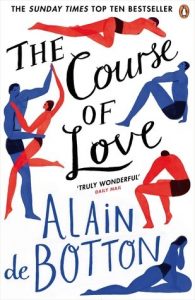
I’ve been in love with Alain de Botton ever since I read Essays in Love. That book stayed with me—kept me awake for several nights, whispering insights about love, longing, and our beautifully irrational hearts. The Course of Love is, in many ways, the sequel. If Essays in Love explores how we fall, The Course of Love shows what happens after the fall—after the vows, the kids, the misunderstandings, the quiet doubts. Through Rabih and Kirsten’s marriage, de Botton paints an honest, often painfully accurate picture of long-term love: tender, messy, complicated, and real.
This isn’t a fairy tale. It’s a psychological X-ray of modern relationships. It dives into fears, emotional blind spots, the arguments about dishes that are really about childhood wounds, and the quiet, daily heroism of choosing each other, again and again. If you’ve ever loved someone deeply and still wondered, “Why does this feel so hard sometimes?”—this book is for you.
“Sapiens”: A Mind-Bending Journey Through the Human Story (with a Side of Existential Crisis)
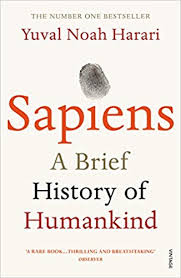
Let’s get one thing straight: Sapiens is not just a book—it’s an earthquake in paperback form. It shook some of my most basic assumptions about humanity, history, and the stories we tell ourselves. And yes, it made me look at religion, society, and even myself with completely new eyes.
Yuval Noah Harari wrote Sapiens when he was just 35 (I know, I had the same reaction—what was I doing at 35? Probably Googling “how to boil quinoa properly”). Harari is an Israeli historian, professor at the Hebrew University of Jerusalem, openly gay, meditates like a monk, and doesn’t own a smartphone. I mean, how much more enlightened can one man get?
The book walks us—sometimes gently, sometimes dragging us by the collar—through the entire history of Homo sapiens, from our hunter-gatherer days all the way to the tech-drenched 21st century. Harari breaks down human history into four major revolutions:
- The Cognitive Revolution
- The Agricultural Revolution
- The Unification of Humankind
- The Scientific Revolution
The core idea? Humans dominate the planet not because we’re the strongest, fastest, or furriest species, but because we’re the only animal capable of flexible cooperation in large numbers. And why can we cooperate? Because we collectively believe in shared fictions—gods, nations, money, corporations, human rights. Harari’s point is brilliantly simple and incredibly uncomfortable: much of what holds our world together exists only in our minds. And that’s when I had to close the book for a moment, stare at the ceiling, and say: “Wait, what?! So money is a… story? Borders are just… ideas?” It’s the kind of read that makes you question your taxes, your job, and the concept of Tuesday.
If you haven’t read it yet, I genuinely recommend it. Not just for the history lesson, but for the quiet revolution that starts in your mind.
Donna Tartt – The Goldfinch. Yes, that Goldfinch.

I wrote about The Goldfinch here, but the truth is… I’m still not entirely over it. Nor do I want to be.
Royal Drama, Russian-Style: Why I Couldn’t Put Down The Romanovs
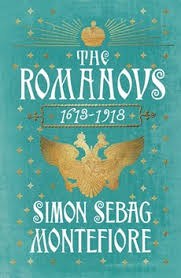
I’ve always been a little obsessed with stories of kings, queens, and empires—those tangled webs of power, passion, betrayal, and bloodlines. So, when I picked up Simon Sebag Montefiore’s The Romanovs, I knew I was in for a wild ride. What I didn’t expect was to find myself completely hypnotized by 300 years of Russian imperial drama—brutality, lust, ambition, opulence, and the kind of family dysfunction that would make any modern soap opera look like a bedtime story.
This 650-page beast of a book doesn’t just recount history—it drags you into gilded palaces and candlelit dungeons, where tsars and tsarinas rule with both splendor and savagery. Montefiore spins the tale of the Romanov dynasty like an epic thriller, weaving through assassination plots, mad emperors, forbidden love affairs, and statecraft soaked in paranoia. Rivalries and conspiracies are everywhere, and nobody—absolutely nobody—is safe.
What struck me most is how the fate of more than twenty nations rose and fell under this iron-fisted dynasty. The Romanovs didn’t just rule Russia; they reshaped the world map with sheer imperial will and often, terrifying indifference. This is not just a history of a family—it’s a masterclass in autocracy, ambition, and the cost of absolute power. If you want to understand how Russia became Russia, this book is essential. If you’re just here for juicy royal gossip… it delivers that too. In spades.
Charles Bukowski – Women
(A Book That Slaps You with a Bar Towel and Then Asks for a Hug)
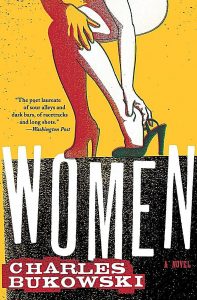
Let’s get this out of the way: Women by Charles Bukowski is not for the faint of heart—or the easily offended. It’s a literary slap in the face, a whiskey-soaked, profanity-laced, sex-drenched monologue about women, alcohol, hangovers, loneliness, aging, and the complicated business of being human while falling apart. If you’re looking for a book with elegant prose, morally upright characters, and romantic declarations under the stars… this ain’t it.
Bukowski’s anti-hero, Henry Chinaski, is a 50-something writer and professional drunk, dragging himself through a chaotic series of sexual escapades and drinking binges. He calls himself “a stupid townsman … a failed shit, full of splashes, who has nothing to offer.” Charming, right? He’s crude, unapologetic, and often borderline repulsive—and yet, somehow, magnetically honest. And that’s what makes this book so hard to put down. It’s like rubbernecking at a car crash you don’t want to see, but can’t stop staring at.
Yes, it’s degrading at times. Yes, there’s an avalanche of the f-word. Yes, some scenes feel like literary versions of a dive bar toilet at 2 a.m. But beyond the vulgarity, Women manages to be surprisingly raw, vulnerable, and darkly funny. Bukowski doesn’t care if you like him—he’s not trying to be liked. But in that indifference lies something painfully human.
At times, I laughed out loud. At other times, I winced. Honestly, I don’t think a book has shocked me this much since Pascal Bruckner’s Honeymoon. But while Honeymoon explored madness and erotic obsession through a more philosophical lens, Women dives straight into the gutter and sets up camp.
Warning label: Definitely not for readers under 18, the easily scandalized, or those currently sipping chamomile tea.
You might hate it. You might love it. Either way, you’ll feel something, and not all books can say that.
Simone de Beauvoir’s Crisis in Moscow: When Love Gets a Soviet Chill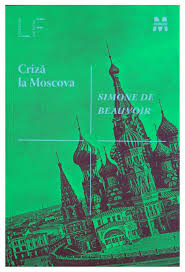
Let’s talk about love, aging, and Russian winters—not necessarily in that order.
Nicole and André are two French university professors visiting Moscow to see Masha, André’s daughter from a previous marriage. A seemingly straightforward visit to the USSR (as romantic as that sounds…) quickly snowballs into an emotional earthquake. Or rather, a slow, silent frost that spreads inside their marriage.
The setting? Gray, cold, restrained. The emotional climate? Not much warmer. And that’s the brilliance of de Beauvoir—how she mirrors the icy, distant Soviet backdrop with the emotional distance between two people who once held hands tightly and now can barely find each other’s gaze. But this isn’t just about a trip to Moscow. It’s about turning 60 and waking up to a quiet panic: Do I still matter? Am I still loved? Do I even recognize this person beside me anymore? And, perhaps more hauntingly: Do they still recognize me?
What I found remarkable is how subtle everything is. There’s no big fight scene, no grand theatrical betrayal. Just small silences. A thousand quiet cuts. Familiarity turned into distance. And still, a longing to fix it all before it’s too late.
It’s no secret that the novel draws from de Beauvoir’s real trips to the Soviet Union with Sartre in the 1960s. And yes, there’s a bit of political commentary on Soviet life, but the real story happens in hotel rooms, train compartments, cafés, and quiet despair. This is not a story about Moscow—it’s a story about emotional exile.
If you’re in your 30s or 40s, it feels like a letter from your future self.
If you’re in your 50s or 60s, it might feel painfully familiar.
And if you’ve ever felt alone while sitting next to the person you love, this book will speak to you like a whisper you forgot you needed to hear. Crise à Moscou isn’t the kind of novel that ends with a bang. It ends with a thought. And that thought might linger with you for days.
Just like love does. Or regret. Or both.
Dancing for Degas: When Art, Love, and Paris Collide
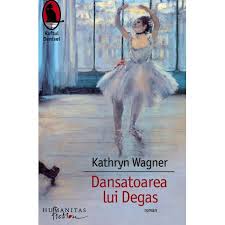
Kathryn Wagner’s Dancing for Degas swept me off my feet and waltzed me straight into the heart of La Belle Époque—a world I never quite manage to leave, even when I try. Paris, the dreamy hum of Impressionism, painters with tortured souls, and girls dancing at the edge of poverty and glory—everything I obsess over was delicately painted across the pages of this novel.
The story follows Alexandrie, a young girl from Espelette, a modest village tucked in the Basque countryside. She dreams not of marriage or wealth, but of movement—ballet, rhythm, the grace of the Paris Opera. Her dream does come true, but not in the glittering way fairy tales promise. Instead, it’s tinged with powdered cheeks, worn satin slippers, and the darker truths that come with being a ballerina in 19th-century Paris.
Behind the velvet curtains of the Opera, there’s another performance: one that plays out in the infamous Green Chamber, where wealthy abonnés pay for more than a front-row seat. They pay for presence, proximity, and the illusion of intimacy. The girls, many barely women, become something between muses and merchandise. It’s here that Alexandrie meets the enigmatic Edgar Degas.
Degas, the painter of dancers, the chronicler of movement, the observer of backstage life, becomes both her artistic mentor and her forbidden desire. She poses for him endlessly, her limbs captured in oil and chalk, her soul laid bare to someone who sees everything but cannot, or will not, reach for it. Their relationship is beautifully frustrating: a push-and-pull of passion that never quite becomes love, of admiration that remains painfully distant.
As Degas ages and his eyesight begins to fail, his focus shifts from painting to sculpture—a medium where the eyes matter less than the hands. He turns to touch what he can no longer clearly see. Somehow, this transition feels symbolic of the story itself: art trying to hold on to life, and love trying to exist within boundaries it cannot cross.
And if you’re curious about the painting on the book cover—yes, it’s real. Dancer Posing for a Photographer (also known as Dancer in Front of the Window) is an oil painting by Degas, now resting in the Pushkin State Museum of Fine Arts in Moscow. It perfectly captures the mood of the book: poised, fragile, and framed by a world that’s both breathtaking and brutal.

